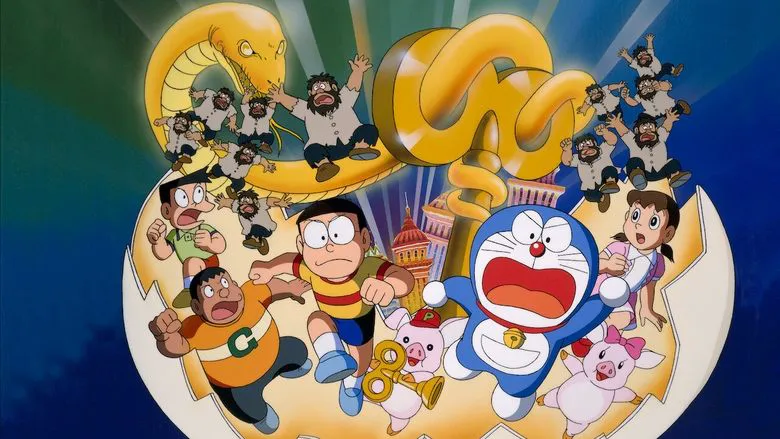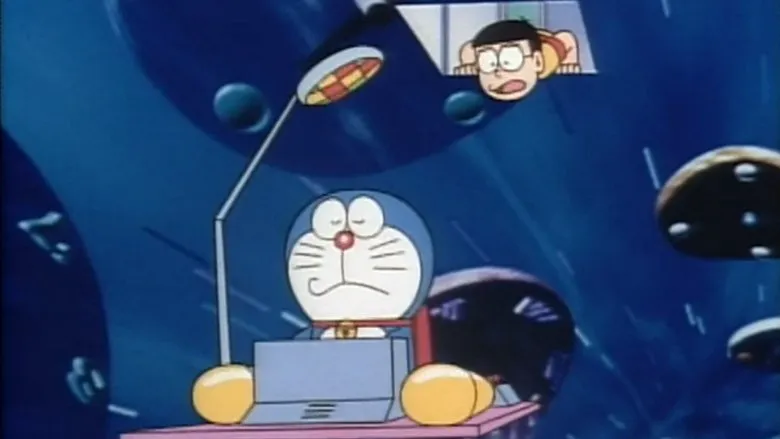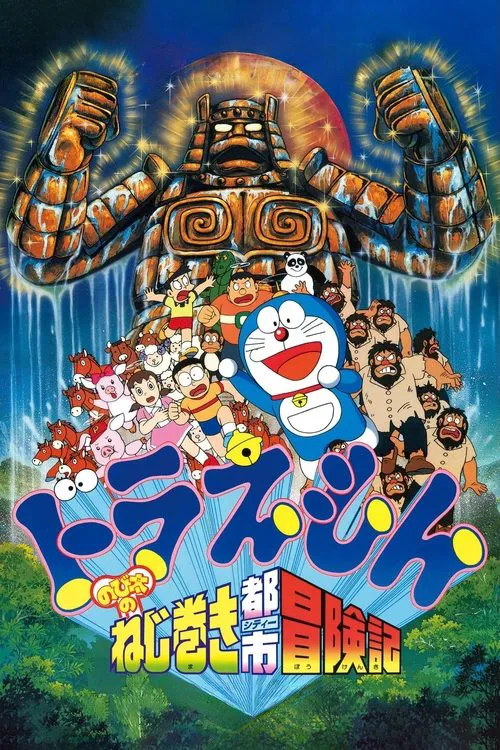Unveiling the Miniature Marvel: The Magic Behind “Doraemon: Nobita and the Spiral City”
Released in 1997 and helmed by director Susumu Maruyama, Doraemon: Nobita and the Spiral City carved out a unique niche within the beloved Fujiko F. Fujio universe. While rooted in the enduring charm of Doraemon, the 22nd-century robotic cat, and his clumsy but kind-hearted friend Nobita, this film ventured into an imaginative realm that perfectly encapsulated the franchise’s spirit of wonder and inventiveness. More than just an adventure, Spiral City is a vibrant testament to the power of imagination and the value of creations, big or small.
The Genesis of a Miniature World
The spark for Nobita and the Spiral City originates from a deceptively simple premise: a lottery win. Doraemon and Nobita, through sheer chance, find themselves the proud owners of ‘Miraina City’ – a miniature planet brimming with intricate contraptions. This initial stroke of luck serves as the launchpad for an extraordinary journey, tapping into a universal childhood fantasy: bringing toys to life. The creative team’s genius lay in how they amplified this simple wish into a grand adventure.

The concept of a “magical screw” from Doraemon’s seemingly endless pocket of gadgets became the lynchpin for this world-building. This singular invention allowed the film to visually manifest the limitless potential of childhood imagination. From miniature robots to talking dolls, every cherished plaything of Nobita’s was given a new breath of life, transforming his humble backyard into a sprawling, vibrant toy town. The animators and designers faced the delightful challenge of envisioning thousands of animated objects moving, interacting, and forming a self-sustaining ecosystem within this pint-sized metropolis, creating a visually rich tapestry that invites viewers to explore every detail.
Crafting Conflict: The “Trash People” Threat
No grand creation is without its challenges, and for Miraina City, the threat emerged from, quite literally, the junkyard next door. The introduction of the “Trash People” provided a tangible conflict, contrasting the pristine, imaginative world with a domain of discarded waste. This villainous gang, living off scraps, became more than just antagonists; they were a metaphorical representation of neglect and disregard, highlighting the film’s underlying critique of consumerism and wastefulness.

Designing the Trash People was a fascinating exercise in creature design, balancing menace with a distinct visual identity that reflected their chaotic origins. Their very existence forced Nobita and Doraemon to step beyond mere creation and embrace the role of protectors, adding an essential layer of moral responsibility to their fantastic adventure.
The Dynamics of Defense: Gadgets, Wit, and Friendship
The core of any Doraemon film lies in the dynamic between its two protagonists, and Nobita and the Spiral City showcases this bond at its finest. When faced with the marauding Trash People, Doraemon’s inventive genius seamlessly integrates with Nobita’s earnest determination. The narrative beautifully illustrates how they leverage Doraemon’s vast arsenal of future gadgets, not just for convenience, but for strategic defense.

The film masterfully orchestrates sequences of traps, clever obstacles, and resourceful enlistment of their living toys in the defense of Miraina City. These moments are filled with both tension and the signature humor of the Doraemon series, reinforcing that while external threats might be challenging, the combined ingenuity and unwavering friendship of the duo are their most formidable weapons. The animation team had to choreograph intricate action sequences involving miniature armies and oversized obstacles, pushing the boundaries of what was previously animated in the franchise.

Lessons from the Miniature: A Lasting Legacy
Beyond the thrilling adventure and dazzling creativity, Doraemon: Nobita and the Spiral City carried a profound message. As the narrative unfolds, Nobita’s journey isn’t just about saving his toys; it’s about understanding the intrinsic value of preserving and caring for one’s belongings. Doraemon, ever the wise and loyal companion, subtly champions the importance of imagination itself – the ability to see potential in the ordinary – and the unwavering strength of friendship.
The film’s ultimate success lies not just in the restoration of Miraina City or the peaceful resolution with the Trash People (who are, notably, offered a fresh start), but in the reinforcing of the Doraemon and Nobita bond. It’s a poignant reminder that creative spirit, true friendship, and a sense of responsibility can conquer even the darkest challenges. Nobita and the Spiral City remains a beloved entry, forever cementing our protagonists as humanity’s most adventurous and ingenious duo, proving that sometimes, the biggest adventures happen in the smallest worlds.